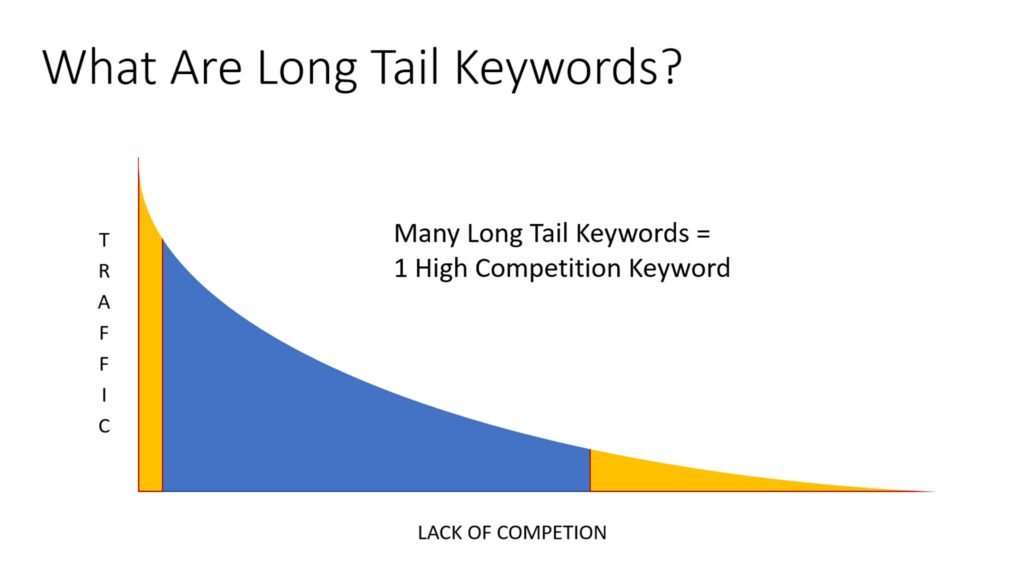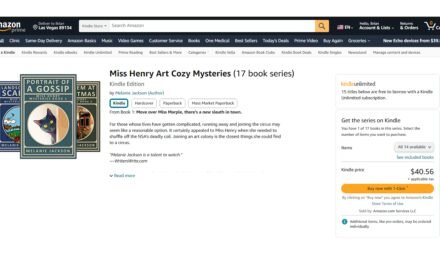Amazon allows readers to search for books using two mechanisms:
- Browse the book category hierarchical menus.
- Enter keyword search strings in the Search field.
This section is about how to optimize your books to respond to the latter search option above or how to perform book keyword SEO search optimization.
Amazon searches for books based on the contents of several KDP fields as specified by the author during self-publication:
- Book Title
- Title
- Subtitle
- Series Name
- Number
- Keywords (7)
- The first paragraph or two of your book description
An Amazon book title can be up to 256 characters long. Assume that you use even 80 characters for your title and series name, which leaves a lot of characters for keyword stuffing in your subtitle.
Warning: Don’t go over ~160 characters for your total book title, or it will start to look sloppy and unprofessional.
But where do you get your keywords?
Follow this process:
Write down a list of one-word base keywords that describe your book. For example, cooking, fantasy, paranormal, romance, thriller, Canadian, book store.
Open an Amazon tab, search the Kindle Store and enter each of your keywords.
Note the search string completions provided by Amazon. These will drop down from the Search box as you type. These are longer tail keywords based on the keyword you entered that readers have been searching for but are easier to rank for than your original short keyword.
Make note of the search completion strings that match your book and keep your eye out for additional search strings that uniquely describe your book.
Gather about 20 long-tail keywords.
Press Enter on each keyword to see how tough the competition is in the search results. Eliminate overly-popular (usually shorter) keywords for which you have no hope of showing up on the first page of search results (e.g. paranormal romance).
When you get down to about seven keywords, use them to populate your book title, keywords and description.
For example, suppose I have a book for which I come up with the following base keywords:
mystery
romance
cozy
canadian
I type “mystery” into an Amazon Search field and get the following search string completion suggestions:
mystery and suspense bestsellers
mystery books
mystery books for kids 9-12
mystery romance
mystery fiction
The “mystery romance” response appeals to me, so I type it and get further keyword expansions of:
mystery romance adult
mystery romance funny
mystery romance comedy
mystery romance books
mystery romance series
I move on and do the same thing with “romance”, “cozy” and “Canadian”. My gathered keywords might look something like this:
mystery romance adult
mystery romance comedy
mystery romance books
mystery romance series
cozy mystery romance
canadian mystery books
women detective mysteries
These are the seven long-tail keywords that I can best compete for. Now, place them in your seven keywords slots, use them to construct a short subtitle and use all the phrases you can in the opening paragraph of your book description.
A sample subtitle might be (though I feel this example is too long):
A Comedy Cozy Canadian Women Sleuth Mystery Romance
As in:
Due North: A Comedy Cozy Canadian Women Sleuth Mystery Romance (Butterscotch Jones Mysteries Book 1 of 1)
As you can see, the subtitle is a little long and obnoxious. I’d have to choose which keywords to go after based on search results.
P.S. Don’t include your lengthy subtitle on your cover or even in your book. The subtitle is strictly being specified to improve Amazon search results for important keywords.
That’s it. After adding your keywords (give it a couple of days for the databases to synchronize), you should be able to enter your keyword strings and see your book in the page one search results. If not, replace the keyword with one for which you do show up on page one.
Using the Amazon Search Completion Database to Gather Keywords
Ever wondered what to use as the keywords for your book while filling out your book description in KDP? Well, there is a correct answer to this question. Follow the steps outlined below to increase Amazon search traffic to your book description page by associating it with keywords for which people search:
- Brainstorm keyword phrases that describe your book. For example:
paranormal romance
magic
merlin
- Type your keyword phrases into the Amazon search box at the top of any Amazon page. Make note of the bolded relevant keyword expansions returned by Amazon as you type. These are the keywords you’re going to use in the keyword section of your KDP book description.
- Type one of these expanded keywords and press enter. Make note of any relevant Related Searches returned by Amazon (if any). These are listed directly below the search keyword box on the search results page right before the first book listed.
- Check the Amazon ranking of the last book displayed on the first page of search results. You’re trying to rank on page one, so this is the book you have to beat. Typically, you’re looking for books with a sales rank no lower 30k to be able to compete, but you may choose to use keywords with an even higher ranking if your book has a high sales rank itself. If you go for keyword phrases with very highly ranked books, you may experience very little search traffic for your efforts, so go for something challenging.
- Repeat these steps until you have a list of 7 keyword phrases to use in your book description.
Evaluating Keyword Potential vs Competition
When evaluating a keyword for use in your book, you want to find a long-tail keyword that generates some traffic but has low competition. This can be difficult to accomplish via a visual evaluation.
First, what’s a long tail keyword? Long-tail keywords are so named because they fall in the long tail of the popularity to competition chart.

Long-tailed keywords are typically long keywords and therefore less popular than their shorter brethren. For example, “detective” would be a very competitive keyword, whereas “woman Canadian detective” is a much longer and less popular keyword. Your goal is to go after multiple long-tail keywords in preference to a single highly competitive keyword.
But how do you evaluate keywords to determine if they’ll generate enough traffic while not being too competitive? Enter KDSPY…
Using KDSpy to Evaluate Keyword Potential vs Competition
KDSPY is a Chrome and Firefox browser plugin that scrapes the screen to analyze the results of an Amazon keyword search. All you need to do is enter a potential keyword into the search box, and press Enter to generate the data required by KDSPY. Then click on the KDSPY logo in your browser, and it will generate a report for the current screen display. In the lower right-hand corner of the display, KDSPY shows you the viability of the keyword by displaying either red (bad), yellow (fair) or green (good) circles for popularity (traffic), potential (money) and competition. Here’s a sample KDSPY display for my book series name.
I’ll see you in the classroom,
–Brian


















